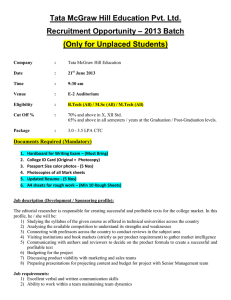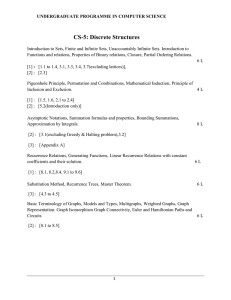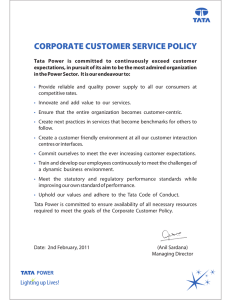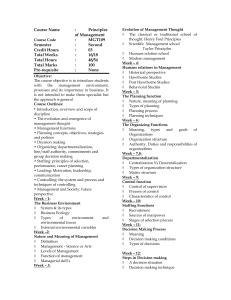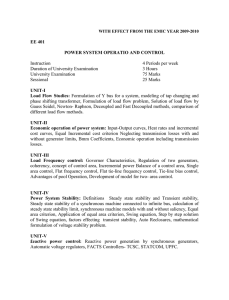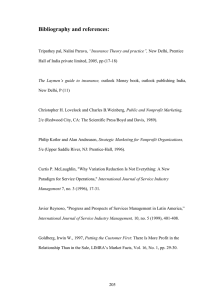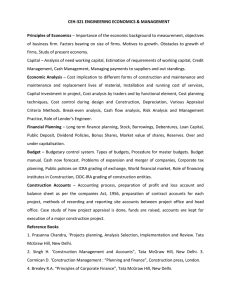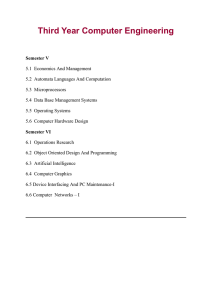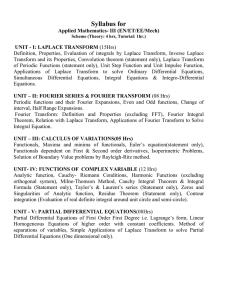Tamil Nadu Public Service Commission
advertisement
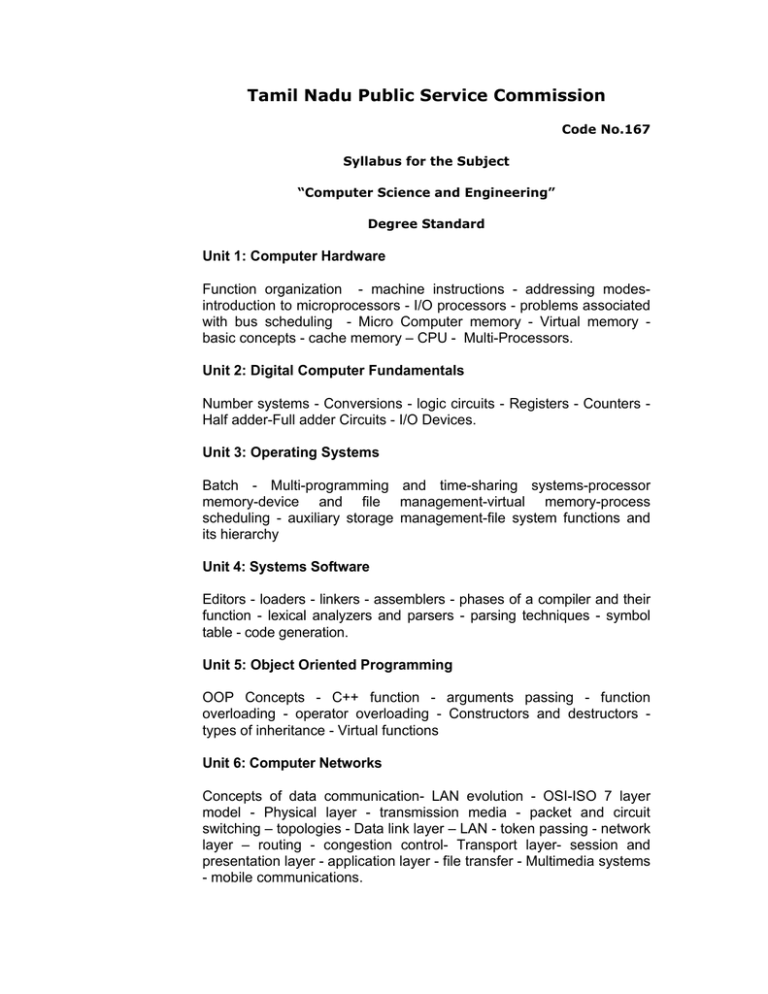
Tamil Nadu Public Service Commission Code No.167 Syllabus for the Subject “Computer Science and Engineering” Degree Standard Unit 1: Computer Hardware Function organization - machine instructions - addressing modesintroduction to microprocessors - I/O processors - problems associated with bus scheduling - Micro Computer memory - Virtual memory basic concepts - cache memory – CPU - Multi-Processors. Unit 2: Digital Computer Fundamentals Number systems - Conversions - logic circuits - Registers - Counters Half adder-Full adder Circuits - I/O Devices. Unit 3: Operating Systems Batch - Multi-programming and time-sharing systems-processor memory-device and file management-virtual memory-process scheduling - auxiliary storage management-file system functions and its hierarchy Unit 4: Systems Software Editors - loaders - linkers - assemblers - phases of a compiler and their function - lexical analyzers and parsers - parsing techniques - symbol table - code generation. Unit 5: Object Oriented Programming OOP Concepts - C++ function - arguments passing - function overloading - operator overloading - Constructors and destructors types of inheritance - Virtual functions Unit 6: Computer Networks Concepts of data communication- LAN evolution - OSI-ISO 7 layer model - Physical layer - transmission media - packet and circuit switching – topologies - Data link layer – LAN - token passing - network layer – routing - congestion control- Transport layer- session and presentation layer - application layer - file transfer - Multimedia systems - mobile communications. Unit 7: Relational Database Management Systems Data models - relational database - SQL Data Manipulation - functional dependency - Normal forms - Design and implementation of typical data base systems - internal and external consistency - Concurrency Control techniques. Unit 8: Application Software Word Processing – Creation – Formatting Page - Layout –Spell Checking - Printing – Mail merge - Dictionary management – Macros – Templates - Spread Sheets – Cells - Formulae – Sheets –Statistical functions – Graphs. Unit 9: Internet Browsers - URL definitions - WWW - Client/Server architecture in internet - domain name extension types - addressing Scheme – Hypertext Transfer Protocol (http) - Search Engines – email – Composing – Attachments. Unit 10: PC Maintenance and Troubleshooting PC hardware Components - Microprocessors in PC motherboard Circuits - Printer Controller - disk controller (floppy and hard) - display adapter- auxiliary subsystems (Serial port-Real time clock-LANmemory expansions & backup) - installation & preventive maintenance - Trouble shooting (Nature of faults - types of faults - systematic trouble shooting – diagnosis – rectifications - diagnostic software - problems in mother board-printer interface - serial port - display adapter - disk drives Reference Books 1. John P. Hayes, “Computer Architecture and Organization”, Third Edition, Tata McGraw Hill, 1998. 2. Morris Mano, “Digital Design”, Third Edition, Pearson Education, 2002. 3. Silberschatz, Galvin and Gagne, “Operating System Concepts”, Sixth Edition, John Wiley & Sons Inc 2003. 4. Andrew S. Tanenbaum, “Modern Operating Systems”, Second Edition, Addison Wesley, 2001. 5. Dhamdhere D M, “Systems Programming & Operating Systems”, Tata McGraw Hill. 6. Balagurusamy E,”Object Oriented Programming using C++”, Tata McGraw Hill. 7. Andrew S. Tanenbaum, “Computer Networks”, Fourth Edition, Pearson Education, 2002. 8. James F. Kurose, Keith W. Ross, “Computer Networking, A TopDown Approach Featuring the Internet”, Third Edition, Addison Wesley, 2005. 9. Abraham Silberschatz, Henry F. Korth, S. Sudharshan, “Database System Concepts”, Fifth Edition, Tata McGraw Hill, 2006 10. C.J.Date, A.Kannan, S.Swamynathan, “An Introduction to Database Systems”, Eighth Edition, Pearson Education, 2006. 11. Taxali R K, “PC Software for Windows Made Simple”, Tata McGraw Hillm 2001. 12. Govindarajulu B, “IBM PC and Clones – Hardware Troubleshooting and Maintenance”, Tata McGraw Hill, 2002.
